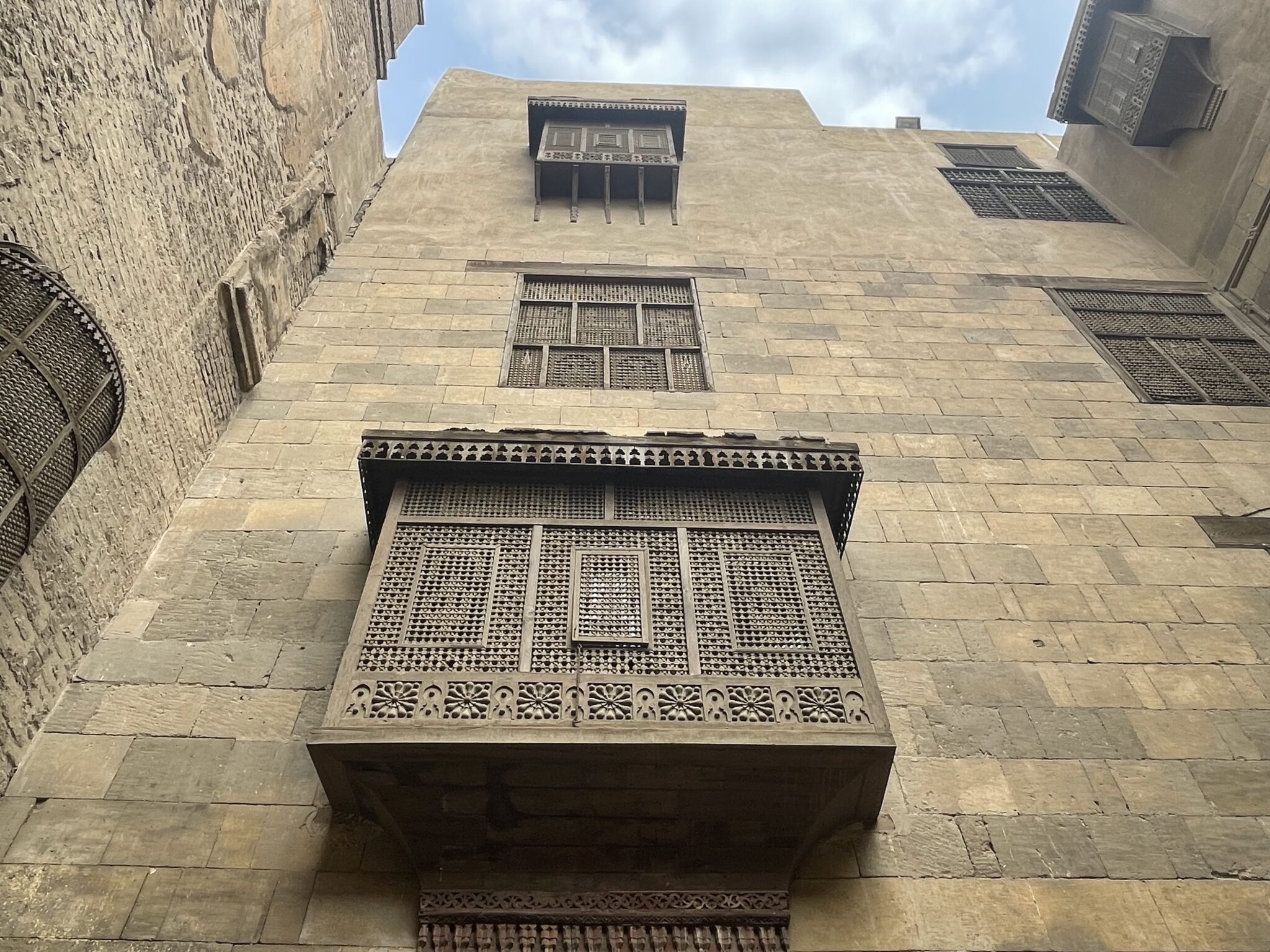Welcome to the project blog for The Mashrabiya Project! This series of events, exhibition, and community making project is organized by the Center for Art in Wood and scheduled to open in November 2022.
What is a mashrabiya, you ask? A symbol of Islamic architecture, the mashrabiya is, simply put, a scalable lattice-screen that can be affixed to windows or installed in interiors. It simultaneously offers protection and ventilation, as well as privacy from public view. It is an ancient device that forms the original premise for modern-day air conditioning: jars of drinking water, placed in deep windowsills, facilitated the passive, evaporative cooling of air brought by breezes entering the interior space. The etymology of the word attests to the multi-functionality of the mashrabiya: sharaba in Arabic means “to drink,” while sharafa translates to “to see”. Whether the original word is mashrabiya or mashrafiya remains unclear; what we do know is that the form evolved over time to serve a number of purposes, including separating interior spaces according to gender and function; providing shade from the sun; and serving as a decorative element to otherwise austere building façades.
Under Islam’s prohibition of representational imagery, the mashrabiya became a framework for artisanal and decorative skill, displaying artful geometry and elaborate perforated designs to become a defining element of Islamic visual culture and ornament. The mashrabiya of North Africa—fabricated of wood, which can expand and contract in response to the region’s intense climate—are found in quotidian and sacred spaces alike. Comprised of thousands of simple, individually lathe-turned components, they are assembled without glue or fasteners to create large, scalable elements and furnishing s that are complex and ornate in design. Bountiful in metaphorical evocations, particularly circulating around dualities of public and private; subject and viewer; denial and reclamation of space; and the porosity of boundaries, the mashrabiya is an enduring symbol both of Islam’s cultural heritage and of the perpetually evolving nature of religion in society.
Though mashrabiya are found throughout the Islamic world–from Morocco to Indonesia and beyond–bearing many names (among them shanashil, rushan, and jali) and in many materials, including stone, cement, and carved wood, the focus of our study is the wood-turned latticework of Cairo, Egypt. It is believed that wood-turning developed in Cairo over 3,000 years ago, so the fact that the craft is still practiced in the bustling metropolis that is Cairo in 2022 is a wonder and source of investigation into craft enterprise across generations.

The Mashrabiya Project will comprise a communal making effort; an exhibition of commissioned art responding to the societal and cultural concepts evoked by the mashrabiya; an immersive augmented-reality “gallery” transporting viewers into the restored historic interiors of Bayt al-Suhaymi and other Islamic heritage sites; a gallery-sited liwan for hospitality and discussion; and a publication examining the mashrabiya in word and image, with writings by historians of craft and architecture (Arabic and English).
Join us for observations and experiences along the way as we build up to the opening of The Mashrabiya Project. This project blog will open a window, as it were, into the mashrabiya in-context. It is as important to understand the cultural environment in which the Cairene mashrabiya exists as it is to study the form and composition of the object, so we will bring you music, food, art, sites, and sounds from this great city as well as the expansive decorative arts tradition that has emerged around the object that serves as the focus of our examination.
Salaam!

Bayt el-Kritiliyya, view of mashrabiya from garden courtyard
The Mashrabiya Project is supported by a grant from The Pew Center for Arts & Heritage.